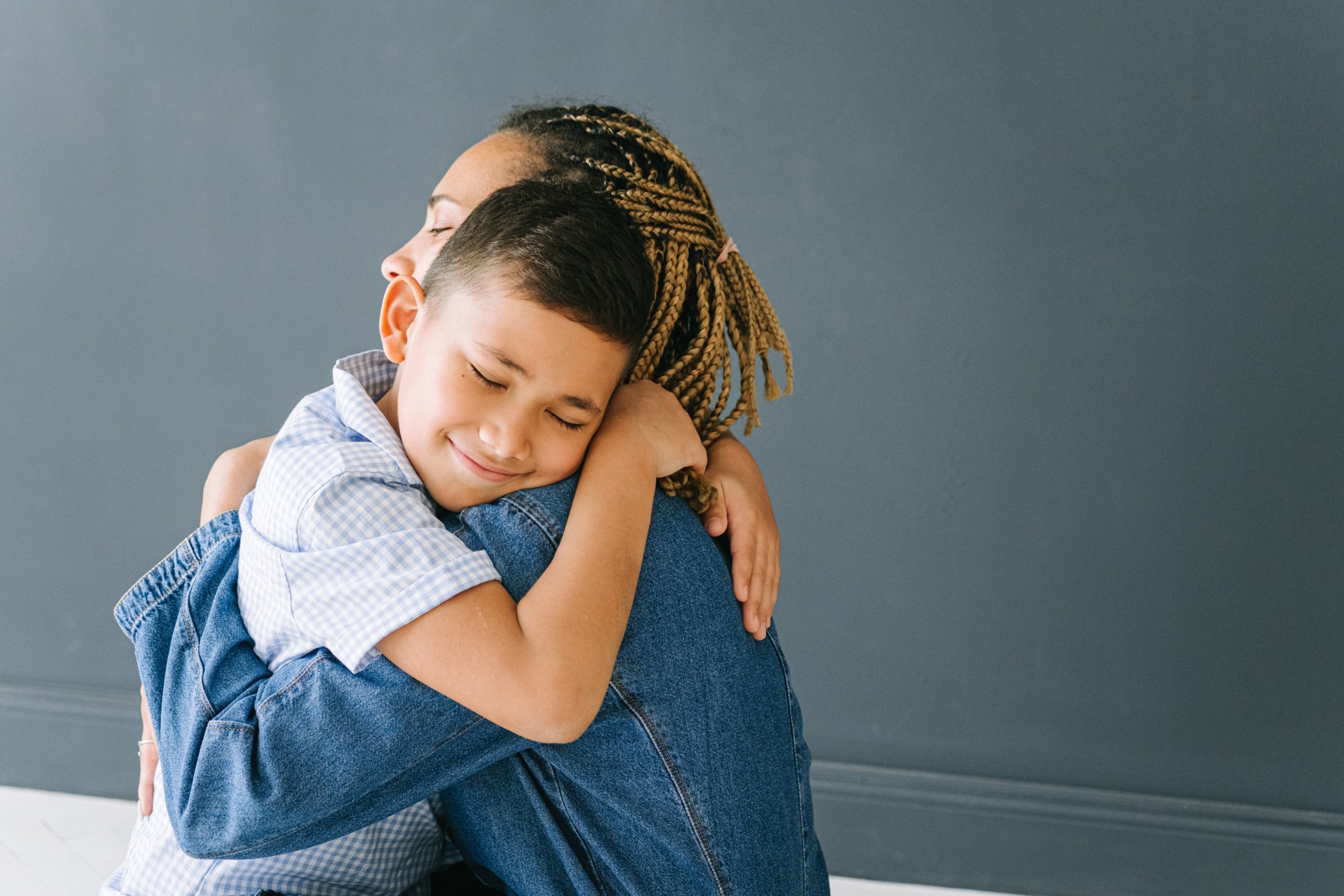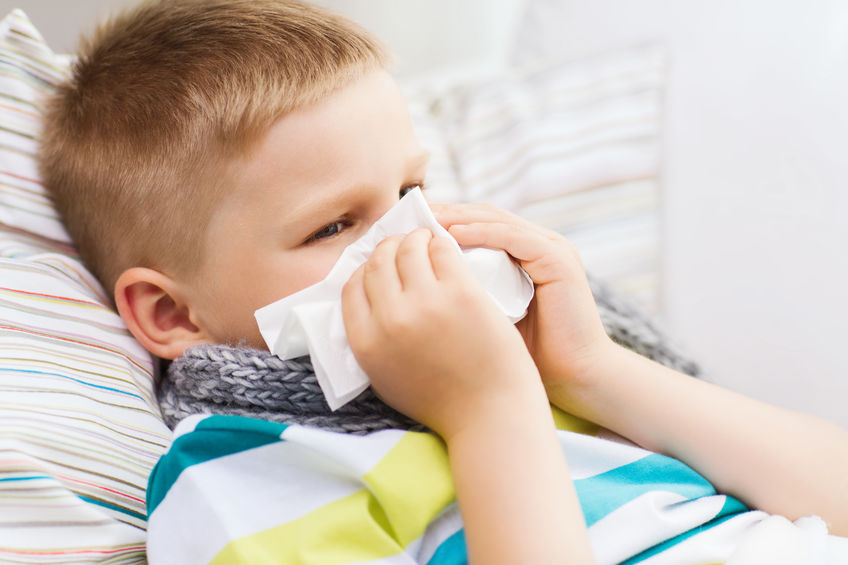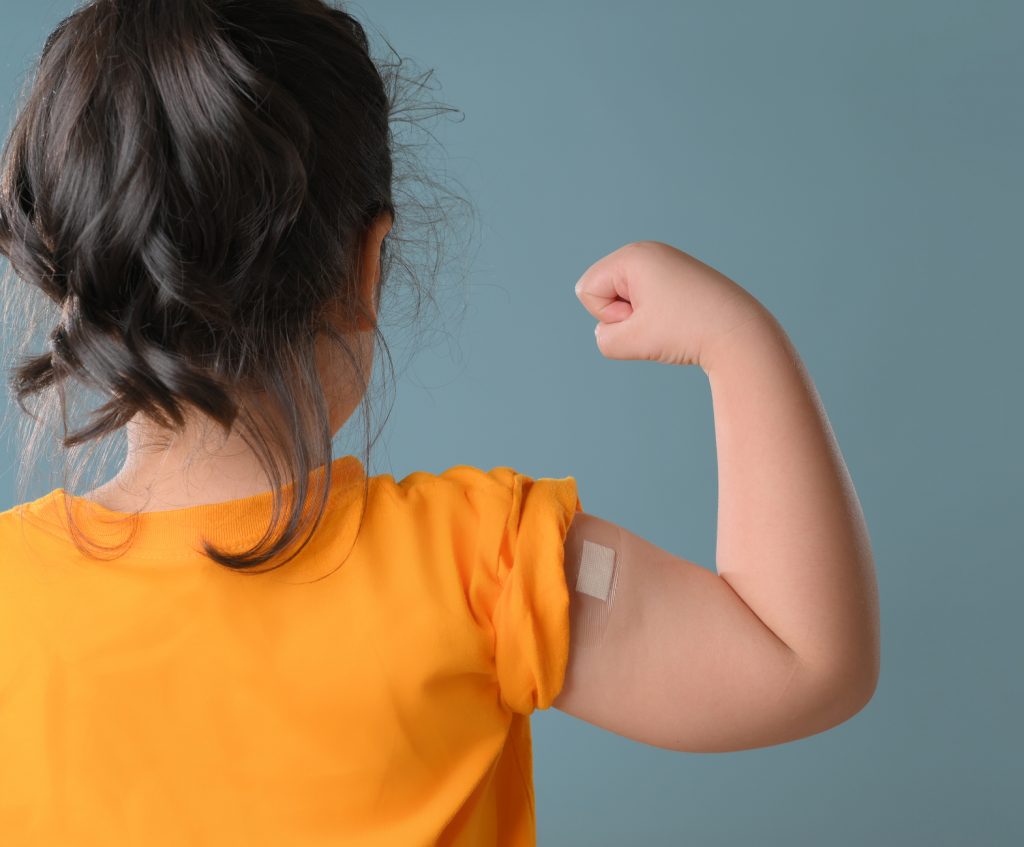
With the world opening up and vaccines being widely available, there are many things to be grateful for, despite all that was put on pause to make room for safety.
As adults, it’s possible to look at these tough times and still find opportunities to be grateful:
- Your family is healthy.
- Your family is safe.
- Your family has gotten to spend more time together this year.
You can balance the good and the bad and continue to practice gratitude — even in the face of extreme circumstances like a global pandemic.
But for children, their gratitude muscles are still developing. How can they be expected to grasp what gratitude is and how to practice it when the world seems particularly unfair and challenging?
Even in a pandemic, working on gratitude with your child is an important part of their social and mental development and can even lead to happier kids. Here are just a few easy ways you can develop habits of gratitude with your children.
1. Start small: Say thank you.
A little goes a long way when it comes to teaching gratitude. While it might feel like you’re just “teaching manners,” saying thank you can mean so much more.
“The concept of ‘please and thank you’ — just in terms of recognizing that something is done for you… the idea that, ‘This is a special enough occasion that I need to make a gesture to recognize it,’ is almost the first step in being grateful.”
— Dr. Tony Pesavento, MD, Children’s Behavioral Health Psychiatrist
For younger children, there are great learning opportunities every day for saying please and thank you. Mealtime and playtime alike can open the door for practicing gratitude. Praise your child when they remember to say thank you for food. Encourage them to say thank you to a friend for sharing their toy. Small moments like these can have a big impact.
If you are looking for ways to reinforce the attitude of gratitude with older children, like teenagers, go a step further. Encourage your teen to write a thank you note to a teacher or coach who has made a positive impact on their life.
You might think that reminding your child to say thank you isn’t teaching them much about gratitude, especially if they need constant reminders.
But if you’ve ever learned a new skill, you know that just doing it helps you get better at it.
Don’t worry so much about whether your child is wrestling with the complexities of gratitude every time they say thank you. Instead, continue prompting — and praising — the behavior itself.
2. Remember, gratitude is a habit.
Gratitude isn’t something you’re born with. It’s a skill that takes time. Just like going to baseball practice can help your child pitch better during the big game, practicing gratitude can help your child throughout their entire lives.
“Usually with parents, I’m trying to get them to remember — this is a kid. You have to learn what gratitude is, and over time, you get better at… But it doesn’t come automatically. It’s not natural. And it’s not really fair for parents to hold against their children what they do for them.”
— Dr. Reo Newring, PhD, Children’s Behavioral Health Psychologist
Doing a little gratitude work with your child every day will help those habits become mindsets and values. The more your child can practice, the more developed their sense of gratitude will become. Some ways you can cultivate gratitude daily include:
- During dinner, have everyone share one thing from that day that they are grateful for.
- Start a gratitude jar, wall, or journal for the family.
- At bedtime, ask your child to share three things they are grateful for that day.
Practice not only naming the thing you are grateful for, but try to push your child to identify and explain the feelings they are associating with it. This will help them develop a deeper understanding of gratitude, as well as the vocabulary to express it.
3. Practice gratitude yourself.
When it comes to learning gratitude, you are your child’s best role model.
Gratitude comes with acknowledging two important things:
- There are positive things in the world or your life.
- Those positive things come from beyond yourself.
Giving your child the language to express both of these things can help them process their own emotions and build their gratitude muscles. But this isn’t a vocabulary they’re just going to wake up with one day. By practicing gratitude yourself, you’re giving your child examples of what it looks and sounds like, while instilling it as a value you hold too.
If you’re not sure exactly what to say, here are some statements that can help inspire your own — and your child’s — gratitude practice:
- “Dad made dinner tonight. I’m thankful we have good food to eat.”
- “The sky is so blue today. I’m grateful for such a nice day where we can play together.”
- “I’m really happy I got to see Grandma today. I missed being able to visit her this year. How does seeing Grandma make you feel?”
Develop An Attitude Of Gratitude
With the pandemic taking up so much of your time and brainspace this year, teaching gratitude may not have been at the top of your to-do list — and that’s okay. Children are strong, resilient, and adaptable. You don’t need to feel guilty if you haven’t been as diligent about making sure your child says “thank you” as you normally would be.
Start where you can, and start small. Choose one or two simple ways to work on gratitude each day. It’s a lifelong practice, and it doesn’t end with childhood. Just a few changes to your daily routine can have a big impact and can give your child tools and positive habits that will benefit them for the rest of their lives.
Want to learn more about teaching gratitude? Check out the epispode “Teaching Your Child Gratitude” on the Just Kids podcast with Drs. Reo Newring and Tony Pesavento.



